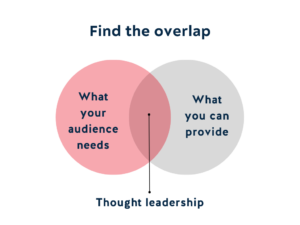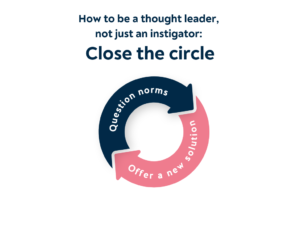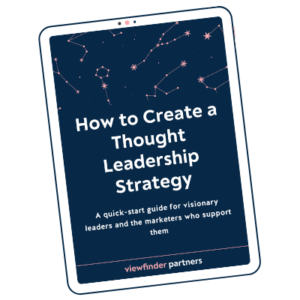Five years ago, I left my job at a content marketing agency to work on my own. At the agency, I was already in the habit of writing a regular email newsletter to our clients. I wanted to keep using that muscle, so I committed to sending a newsletter to my own tiny list every other Friday. (Sign up for the newsletter here.)
Five years later, I’m writing the 120th issue of the email. 120!
Do you know how easy it would have been for me to NOT do that? I’m guessing you do, because deciding to start a thought leadership practice but delaying actually doing it is a pretty universal experience.
When I was first starting out, I had a lot on my to-do list. Establish LLC, set up business banking, figure out what services I was actually selling, find clients, sell work, develop initial contracts, send invoices, figure out quarterly taxes, build website, refine all of the above based on what I’d learned, etc. etc. etc.
It would have been a no-brainer to put “write newsletter” or “brainstorm email ideas” or “make editorial calendar” or “figure out what my thought leadership should look like” at the very bottom of that to-do list. It could have been a “tomorrow” task, or an initiative for year 2, or something I’d figure out down the line.
But I had a hunch that if I wanted to help other people build their thought leadership practices, I needed to build my own thought leadership practice—not in the theoretical future when I’d magically have more time, but right away.
And I’m so glad I did. 120 emails later, the results have nothing to do with the number of emails I’ve sent or even the size of my list. Instead, the results are in me, in the clarity of my thinking, in the way my work with clients has evolved, and in the ideas I’ve forced myself to develop through a consistent deadline that’s never more than 2 weeks away.
Below, I’m sharing 3 of the frameworks that came out of the newsletter—ideas that were already floating around in my head and my work with clients that I was forced to reflect on, codify, explain, and name because my previous self had set this damn deadline every other Friday.
During my busiest seasons, I was very annoyed at that version of myself. I’d see the reminder glaring at me on my calendar and think, “AGAIN?! Another one? But I just sent one. And I don’t have any new ideas!”
Aha. That’s the power of a consistent practice. It’s not about having an endless well of great ideas, ready to polish and share with ease. It’s about the grind—forcing yourself to go deep inside your scattered brain, find the tiniest nugget of an idea, and turn it into something you can share. It’s about twirling the spaghetti. It’s a huge pain, and that’s coming from someone who actively and enthusiastically chooses to do this work for a living!
Every writer will tell you that the actual writing—sitting down at the keyboard and churning out the actual words—is excruciating, and writers are known for their impressive procrastination practices.
But it’s worth it.
Because I committed to writing regular newsletters, 120 times, I have the following frameworks to share with you. I hope they help you as you keep chugging along, tackling the deadline monsters in your own thought leadership practice.
1. The thought leadership cycle
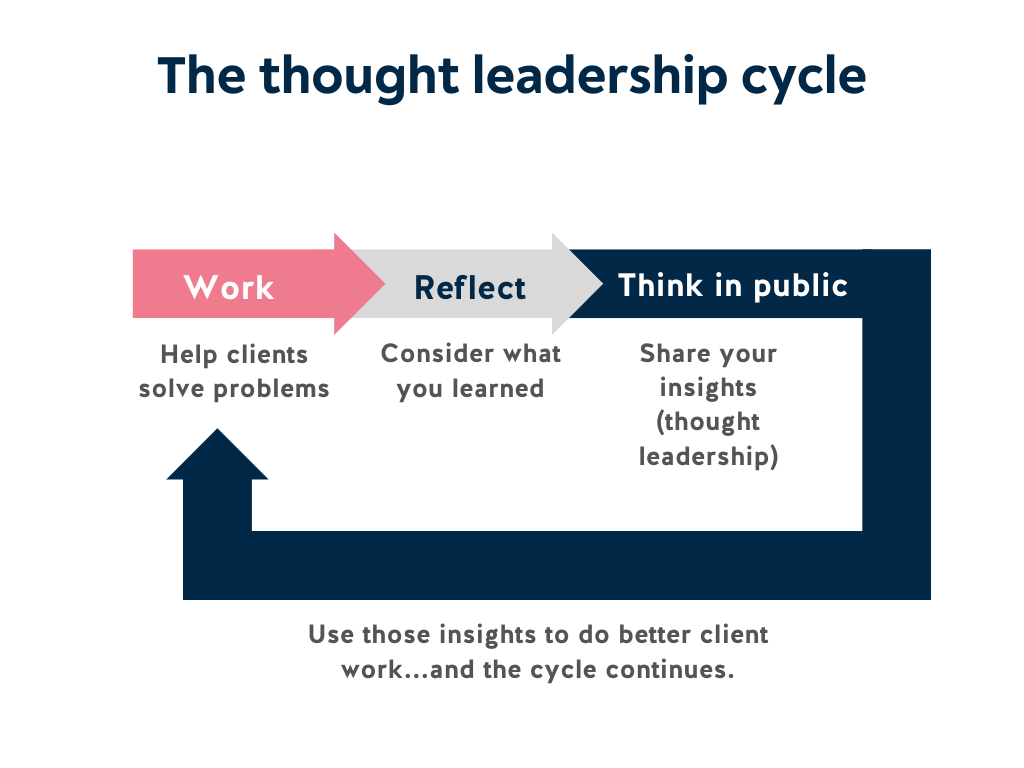
I use this framework to show people that they’re already halfway down the path to being thought leaders. They’re already doing the work. Thought leadership just requires pausing to reflect on that work and turning your insights into something you can share.
The compounding effect, though, is powerful. Thought leadership isn’t a linear process; it’s circular. Reflecting on what you’ve learned and sharing those insights comes back around and helps you do better work. So, really, practicing thought leadership is just another way to get better at what you do. It isn’t about ego or praise; it’s about better understanding your own craft. It’s a way to harness the power of reflection.
2. 3 kinds of thought leaders

I first developed this breakdown of 3 ways to be a thought leader in 2020 to bust the myth that there’s only one personality type who can be a thought leader. I continue to use these 3 examples in conversations with clients, when I speak to groups, and in this email.
The premise:
How you show up as a thought leader — the format, the style, and the degree to which you share — depends on who you are and what your audience needs from you. Three kinds of 3 kinds of thought leaders inspire me:
- THE BEACON: A beacon works in public very transparently, shares their decisions in real time, and shines as an example for others. A beacon shares expertise, guidance, advice, and perspective.
You’re a beacon if you…generously share what you’re learning.
- THE CURATOR: A curator gathers together people and ideas. They make connections, simplify the noise, and rally communities. A curator offers resources, connections, and a listening ear. (I consider this is the easiest entry point into thought leadership)
You’re a curator if you…find yourself saying, “You really need to meet Brittany,” or “I just read a study about that.”
- THE CHALLENGER: A challenger offers new perspectives and alternate viewpoints. They start conversations and shift mindsets. A challenger presents unexpected viewpoints, new definitions and frameworks, and updated metrics for success.
You’re a challenger if you ask “why?” a lot, want to create something new, and see a new path forward.
3. The one-sentence thought leadership strategy
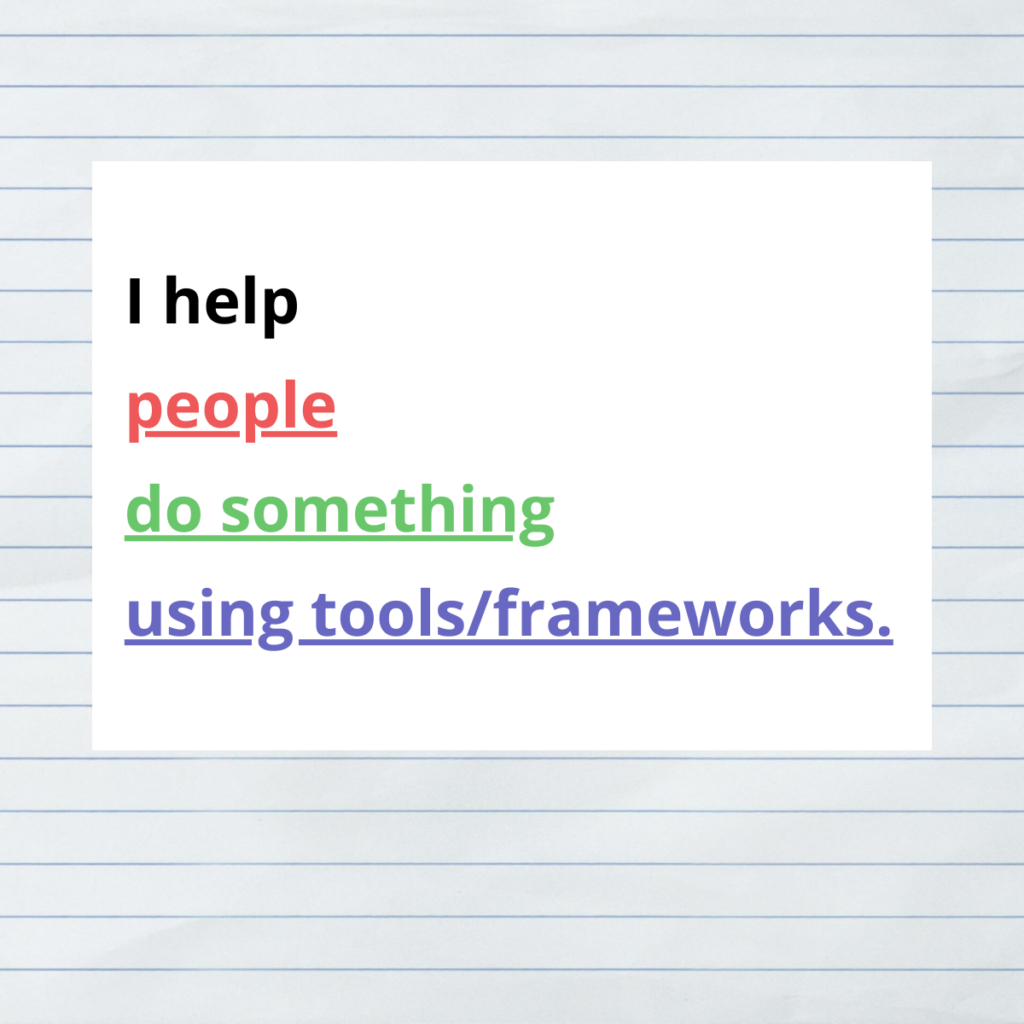
Sometimes the simplest exercises are the most powerful.
For the last couple of years, I’ve helped clients develop one sentence that forces them to decisively answer the questions:
❓Who do you serve?
❓What do you help them do?
❓How is your approach unique?
By answering those questions, they define their audience (and stop trying to be everything to everyone), understand what their audience needs, and (this is the hard part!) get clear about their secret sauce.
I’m not claiming that any of these simple frameworks make me a genius. But I am owning that I never would have made them up if I hadn’t had a recurring deadline breathing down my neck.
If you want to commit to building your thought leadership practice, set a deadline. One that keeps on coming. And commit to yourself that you’re going to keep meeting the deadline, even when you’re tired or out of ideas or “have nothing to say.” Because the magic is, over time, you will.


